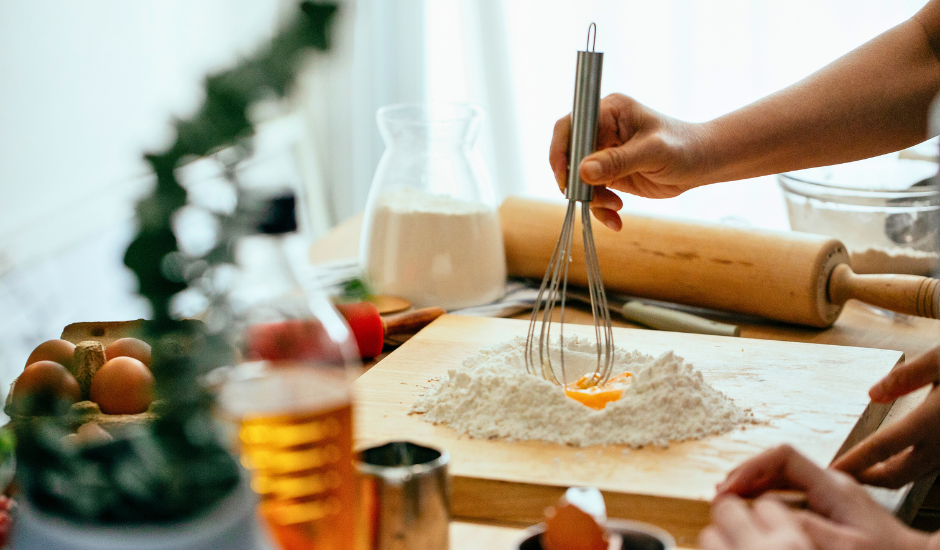
The prospect of preparing and cooking a meal can be daunting for some visually impaired (VI) people. But, with a little thought and planning, it’s possible to produce great results.
The Kitchen
For those who have some residual sight, good lighting is always essential.
Lighting suitable for your needs is important and will help you use your remaining vision to the best of your ability.
Good organisation is vital for all cooks, whether you have some sight or not.
You need to know where all your knives, bowls, jugs and other utensils are located. Work surfaces should be kept clear to avoid knocking things over and to maximise space.
Useful tip: Try to avoid having things like the dog’s bowl, or other obstructions on the floor to prevent trip hazards.
Appliances
Where possible, use your own cooker or familiarise yourself with your equipment before cooking with it. It can be hard to find the rings on an induction-type hob where they are flush with the surface.
Useful tip: Some people find an LED display easier to read than an LCD one.
Cooker dials can be difficult to read, so using tactile markers (“bump dots”) can make this easier. Warwickshire Vision Support or your local sight loss organisation can advise on these.
Many of the tasks involved in cooking require accurate measurement or fine judgement which can cause issues for the VI cook.
There are, however, many devices and utensils that are designed to help.
Water boilers that produce a specific amount of hot water; talking microwave ovens, air fryers, thermometers, scales, tactile measuring jugs and spoons are just a few.
Storage of Ingredients and Utensils
Finding ingredients or utensils can be an issue for the VI cook, so make sure that you are familiar with where things are stored in the cupboards.
Useful tip: Get organised and create a consistent system for locating items. Tactile or braille labelling of jars and packets can help with locating ingredients.
Assistive technology, such as apps like SeeingAI and Be My Eyes can be used to read use-by dates or ingredients on packages. Torch and magnifying functions on mobile phones can also help.
Preparation
Following recipes can be challenging, especially if you need to use a magnifier or an audio recipe.
Chopping vegetables takes extra time and care, but using a finger guard can be a great way to stay safe while cutting or preparing food. We can provide training to help you in these areas.
Useful tip: Buying ready-prepared vegetables saves time and avoids using sharp knives.
Tins can also be an issue with sharp edges, so take extra care when opening them.
Timing is important when preparing a meal, so using voice-activated audible timers on phones or smart speakers can really help.
Safety
All cooks need to remember that the kitchen can be a hazardous place to work, but if you have limited or no sight, it can be particularly dangerous.
Here are a few things to remember to keep safe:
Avoid distractions: It’s great to sing along to your favourite songs as you cook, but wielding sharp utensils requires concentration! Similarly, a glass of wine goes down nicely, but alcohol impairs focus, so perhaps save it for when you are eating?
Stay tidy: Clean up spills as soon as they happen, especially on the floor.
Stop Spills: Make sure that pans on the hob have their handles away from anywhere they can be knocked.
Go For It…
Many people find cooking a pleasurable pastime and being visually impaired should not stop anyone from having fun in the kitchen.
With a little thought and planning you can produce amazing food.
Cooking does take a little practice, so don’t be put off if things go a little wrong at the beginning.
Like many other skills, the more you do it, the more confident and competent you will become.
If you need support or advice on navigating the kitchen, reach out to the team at: [email protected]